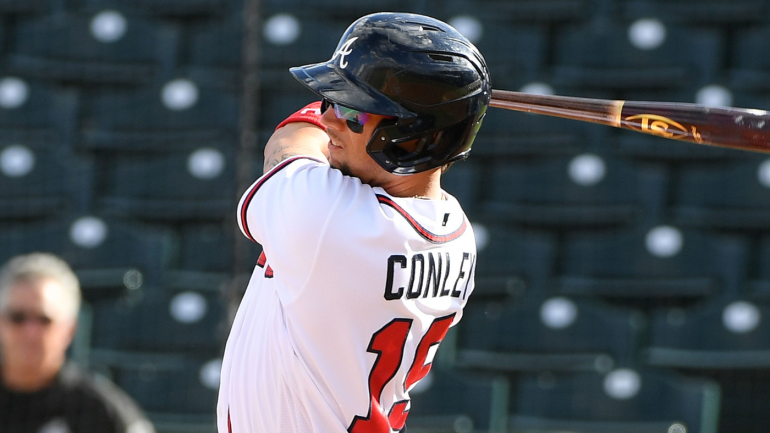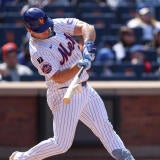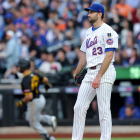
Cactus League and Grapefruit League play began in earnest Saturday and that means the entire league is experiencing the new pitch timer for the first time. Manny Machado became the first player hit with a pitch timer violation Friday, when there were only three exhibition games on the schedule, by failing to get in the box on time. He was charged with an automatic strike.
Saturday afternoon, we had our first walk-off pitch timer violation. Home plate umpire John Libka ruled Atlanta Braves prospect Cal Conley was not in the box and alert to Boston Red Sox pitcher Robert Kwiatkowski at the eight-second mark, and called an automatic strike. The automatic strike came in a 3-2 count with the bases loaded and two outs in the bottom of the ninth, with the score tied 6-6. That's as high leverage as situations get.
In accordance with best practices, extra innings were not played in a spring training game, so the automatic strike call on Conley was a game-ender. The final score was 6-6. Here's the video:
"The umpire said I was looking down. I was looking down at the catcher as he was standing up. Not really sure if the pitcher was ready to go, catcher definitely wasn't," Conley told the Atlanta Journal-Constitution after the game.
Clearly, Conley was not alert to the pitcher at the eight-second mark, and, clearly, catcher Elih Marrero was standing up and not ready to catch at the eight-second mark. That doesn't matter though. The hitter has to be alert to the pitcher at eight seconds and the catcher only has to be in the catcher's box at nine seconds. He does not need to be in his squat. Standing is fine.
"This is going to be all over SportsCenter," Braves manager Brian Snitker joked after the game (per The Athletic). Red Sox super utility guy Enrique Hernández had fun with it as well:
Pitch clock coming in clutch!
— Enrique Hernández (@kikehndez) February 25, 2023
With the new pitch timer, pitchers have 15 seconds to begin their delivery with the bases empty and 20 seconds with runners on base. The batter must be in the box and alert to the pitcher at the eight-second mark, so it as much a hitter clock as it is a pitcher clock. There have been more hitter violations in the super early days of camp than pitcher violations.
Morgan Sword, MLB's executive vice president of baseball operations, recently called the pitch clock "probably the biggest change that's been made in baseball in most of our lifetimes." Chalk up Conley thinking the catcher's positioning is relevant to the pitch timer to the learning curve. That's why they're using spring training as an adjustment period.
![[object Object] Logo](https://sportshub.cbsistatic.com/i/2020/04/22/e9ceb731-8b3f-4c60-98fe-090ab66a2997/screen-shot-2020-04-22-at-11-04-56-am.png)


















